
Deep-Plane Facelift: Your Complete Guide for 2022
Could You Be a Candidate for a Deep-Plane Facelift?
The aging process leaves its mark on the face of every man and woman, and not everyone is happy to see these changes! While many plastic surgery facelift techniques can reverse the signs of aging, a Deep-Plane Facelift offers one of the most comprehensive strategies for creating a more youthful appearance. Fine lines and wrinkles can be smoothed away, skin can appear firmer, and your overall look can be rejuvenated. If you’re a good candidate for a Deep-Plane Facelift, this facial plastic surgery procedure could give you the results that you want to see in the mirror every day!

When considering a Deep-Plane Facelift, it’s essential to understand what the procedure entails and what you can expect in terms of results. This complete guide will tell you everything you need to know about Deep-Plane Facelifts, including what to expect before and after surgery (with images)!
Deep-Plane Facelift
Swedish plastic surgeon Torg Skoog first described it in the early 1970s – this plastic surgery secret has been around for a while! But the Deep-Plane Facelift has become increasingly popular over the past few years due to its ability to produce more natural-looking results than traditional facelifts. This facelift can address several concerns, including sagging skin, wrinkles, and volume loss.
The Deep-Plane Facelift is a type of surgical procedure that is used to correct facial aging. It is a more extensive procedure than a traditional facelift, and it addresses deeper structures of the face. The Deep-Plane Facelift works by repositioning the deep structures of the face, including the muscles, fat, and connective tissue. This allows the surgeon to create a more youthful appearance by correcting sagging skin and improving the overall foundation of the face.
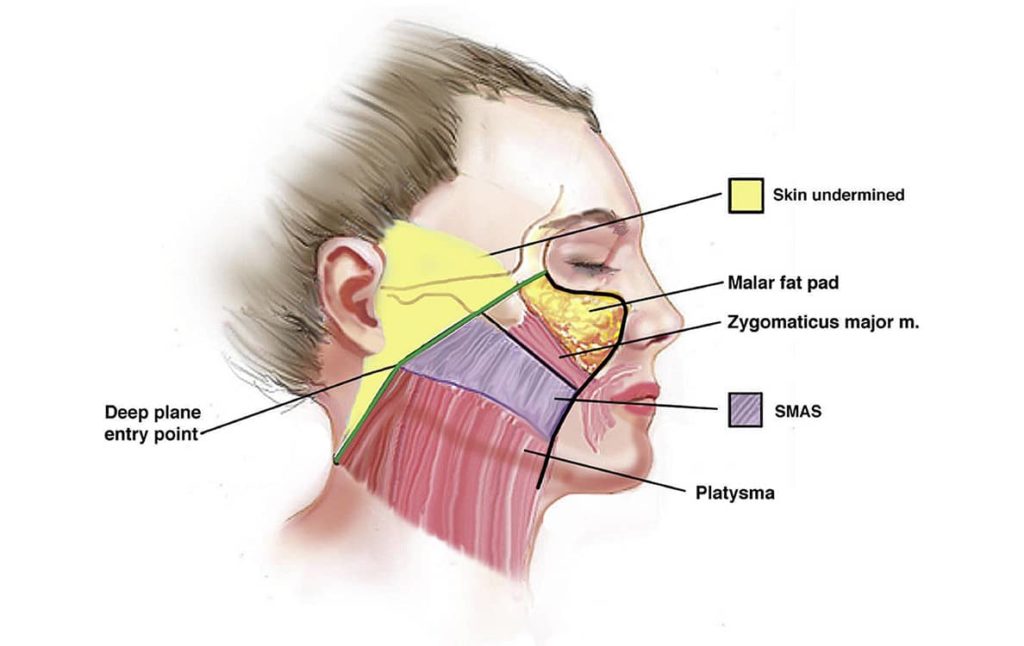
What Is Involved In a Deep-Plane Facelift?
There are several approaches to this facelift procedure, but the Deep-Plane variety provides significant anti-aging benefits to the mid-and lower facial regions. When a trusted board-certified facial plastic surgeon makes surgical changes to these areas, the fine lines and wrinkles around the nose, mouth, and eyes can be smoothed out — resulting in a naturally youthful appearance.The typical Deep-Plane Facelift will involve alterations of deep tissues in the face, allowing your body to naturally reposition these tissues post-procedure. The process includes adjusting the underlying tissues and skin in a vertical direction instead of the typical horizontal direction, which is used in a traditional SMAS facelift. This change in direction helps to achieve a more youthful look that undoubtedly defies time and the pressure of gravity. A Deep-Plane Facelift surgeon can counteract many unwanted effects of the aging process in a much broader scope.
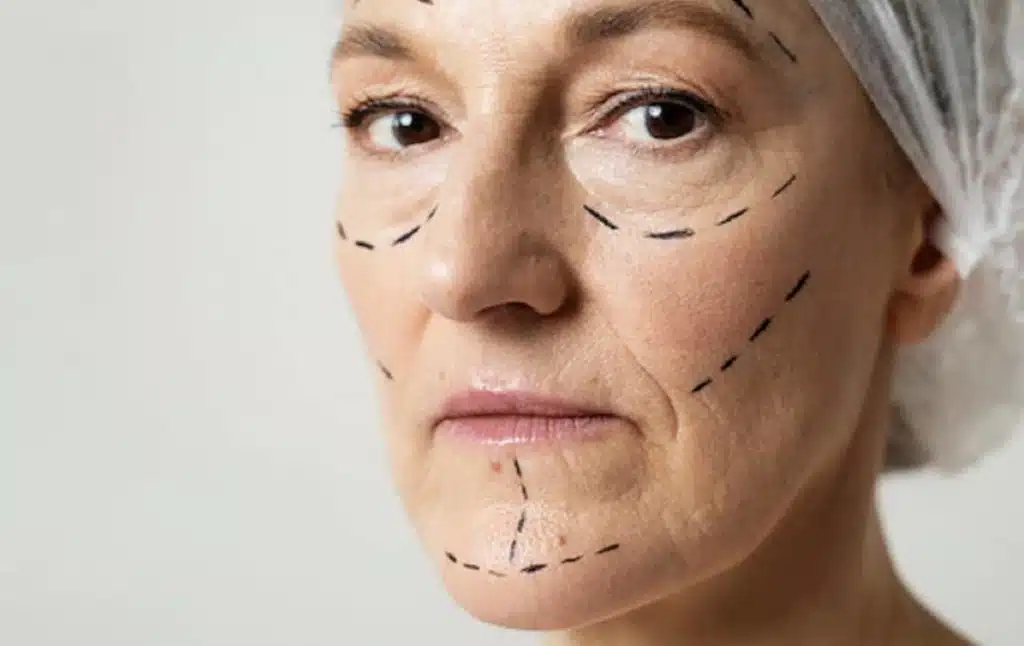
Detailed Procedure: How is a Deep-Plane Facelift Performed?
A Deep-Plane Facelift is typically performed under general anesthesia, which means you will be asleep during the procedure. The surgery takes about two to three hours to complete.
Here are the steps involved in a Deep-Plane Facelift:
Anesthesia:
The first thing your plastic surgeon will do is administer anesthesia. This can be done intravenously (IV), which means you will receive medication through a small tube inserted into your vein. Once you are asleep, the facelift surgeon will make incisions.
Incisions:
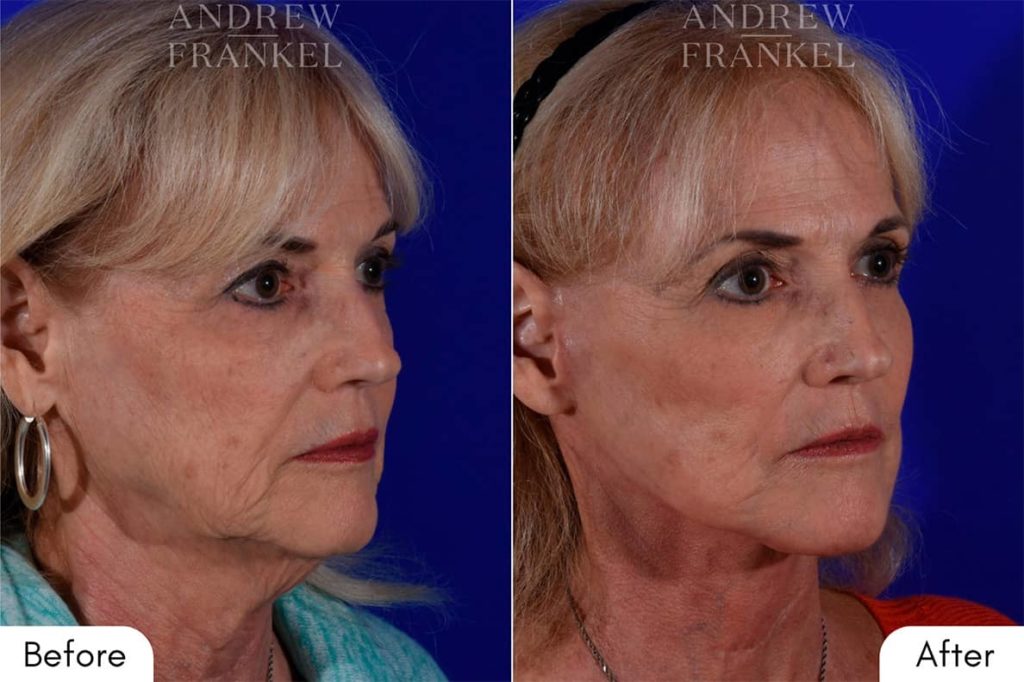
There are two types of incisions used in a Deep-Plane Facelift:
- The traditional facelift incision begins in the hairline at the temples, extends down in front of the ear (known as a preauricular incision), and continues behind the ear.
- An alternative incision starts in the hairline above the ear and wraps around behind the ear. This is sometimes called a short-scar or limited-incision facelift.
The type of incision used will depend on each patient’s specific needs. Through these incisions, the surgeon will access the deeper layers of the face.
Repositioning the deeper layers of the face:
Once the incisions have been made, the surgeon will reposition and tighten the deeper layers of the face. This includes the cheek muscles (the SMAS or superficial muscular aponeurotic system) and the deep facial muscles. The surgeon will also reposition fatty tissues in the face to create the youthful appearance that all patients desire.
Lifting the Facial tissues:
After the deeper layers have been repositioned, the surgeon will lift the facial tissues and the skin. The incisions will be closed with stitches or surgical tape. A small drain may be placed under the skin to help remove any excess fluid. The drain is usually removed within a day or two.
Fat grafting:
In some cases, the surgeon may also perform fat grafting which involves taking fat from another area of the body (such as the thighs or abdomen) and injecting it into the face to add volume. Fat grafting can help to improve the results of a Deep-Plane Facelift.
After the surgery, you will be taken to a recovery room, where you will be closely monitored. You will likely experience some bruising and swelling, but don’t worry, this is normal and should resolve within a few weeks. Most patients can return to their normal activities within two weeks. However, it may take up to six weeks for the full results of the surgery to be evident!
What Makes a Deep-Plane Facelift Different?
Traditional facelifts, also known as superficial muscular aponeurotic system (SMAS) facelifts, apply slightly different methods. Using incisions along the hairline and ears, the facelift surgeons will lift the tissue outward which creates a firmer appearance. Most of the changes of a traditional facelift technique are limited to the lower face, where the chin and jaw will look more defined. While the skin is tightened and excess skin deposits are removed in both approaches, the subtle difference of lifting the tissue upward makes the Deep-Plane Facelift a preferred choice for many facelift patients. Traditional facelifts won’t do much to reverse aging damage to the mid-face, whereas the Deep-Plane surgical procedure can rejuvenate this area and the lower face.
Additionally, a Deep-Plane Facelift can create longer-lasting results for a patient when compared to traditional facelifts. This is because the heavier tissues are independently supported in a Deep-Plane Facelift, they can remain in position for much longer before the aging process weakens these tissues.
Other benefits of an optimal Deep-Plane Facelift may include better healing of the incisions, more natural-looking results, improved circulation throughout the entire face, fewer postoperative bumps or lumps, and even less bruising. A deeper dissection of the face and neck creates the dramatic change many patients hope to achieve with their facelift surgery. Talk to your facial plastic surgeon to discuss your specific cosmetic concerns so you can create the right cosmetic surgery plan to achieve your desired results.
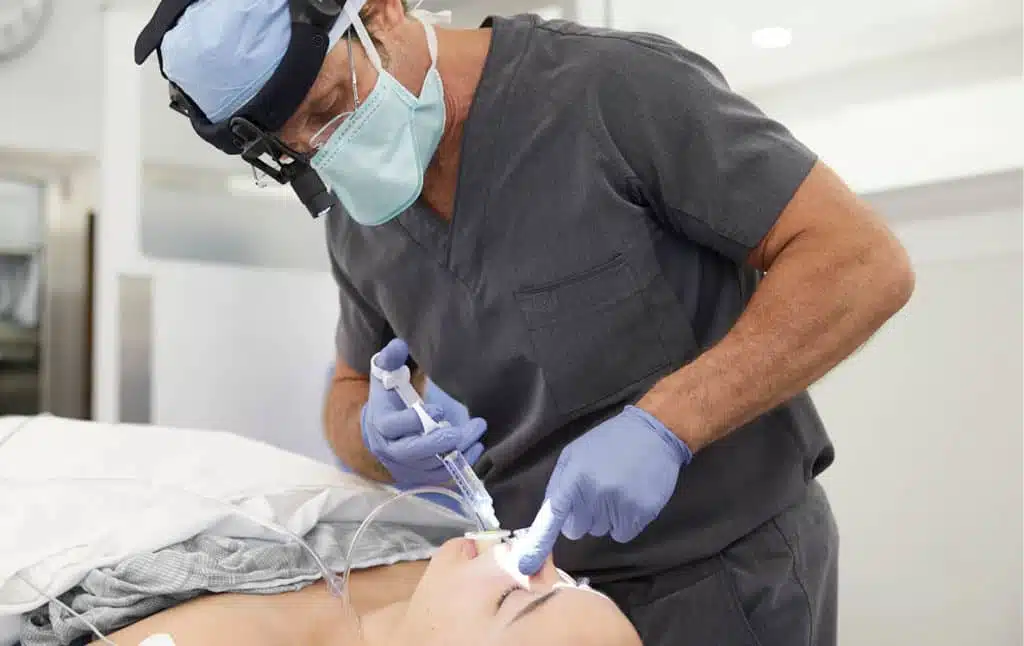
What Does a Deep-Plane Facelift Recovery Involve?
Following deep-plane facelift surgery, patients should expect some redness, bruising, and swelling around the area for the first 2 weeks before these symptoms will gradually dissipate on their own. Your facial plastic surgeon will prescribe pain medication to help you manage your discomfort and likely recommend several techniques to reduce swelling, including the application of cold compresses and constant head elevation. Follow these instructions closely to achieve your best Deep-Plane Facelift treatment results, and be sure you get enough rest to allow your body to heal before you return to work.
Some light bleeding may also follow your surgery so don’t be alarmed if you see some spotting on your bandages during the first few days post-procedure. If you notice any excess bleeding, your pain or swelling worsens significantly, or you notice a change in your incisions, don’t hesitate to contact your facial plastic surgeon’s office for follow-up care and advice.
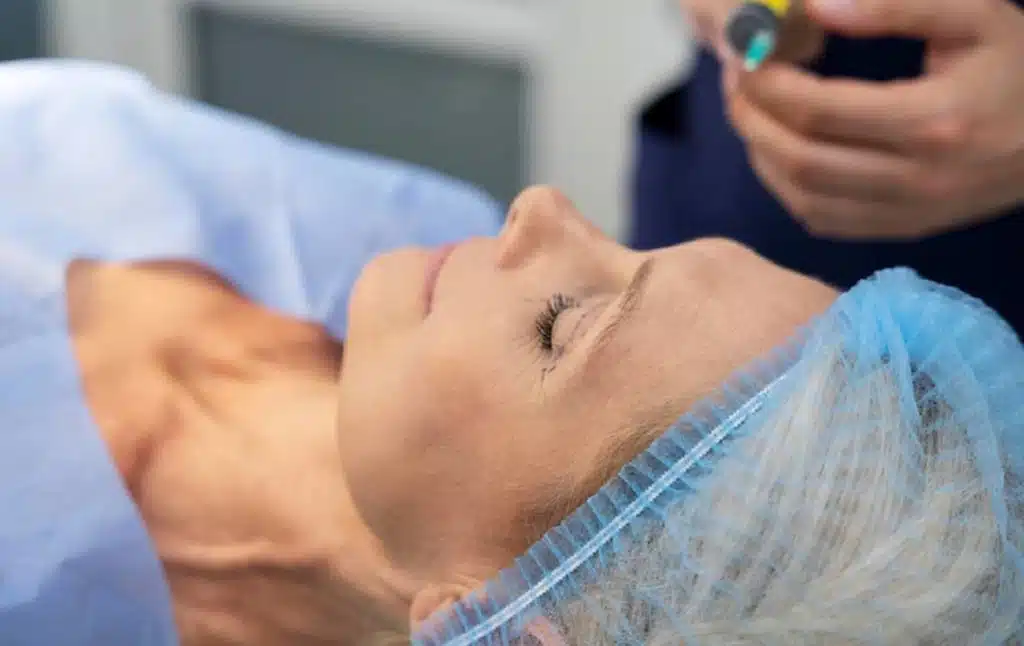
Is The Recovery Different From a Traditional Facelift?
Recovering from a Deep-Plane Facelift is very similar to the process following a traditional facelift, often lasting about one to two weeks with many of the same side effects. If your Deep-Plane Facelift was performed well by the best facelift plastic surgeon in Beverly Hills, you should expect smoother healing of the incisions and a reduced amount of bruising throughout the area. Deep-Plane Facelift recoveries do not involve any special measures, risks, or potential complications so patients can reap the extra benefits of this surgery without any additional worries!
Benefits of Deep-Plane Facelift
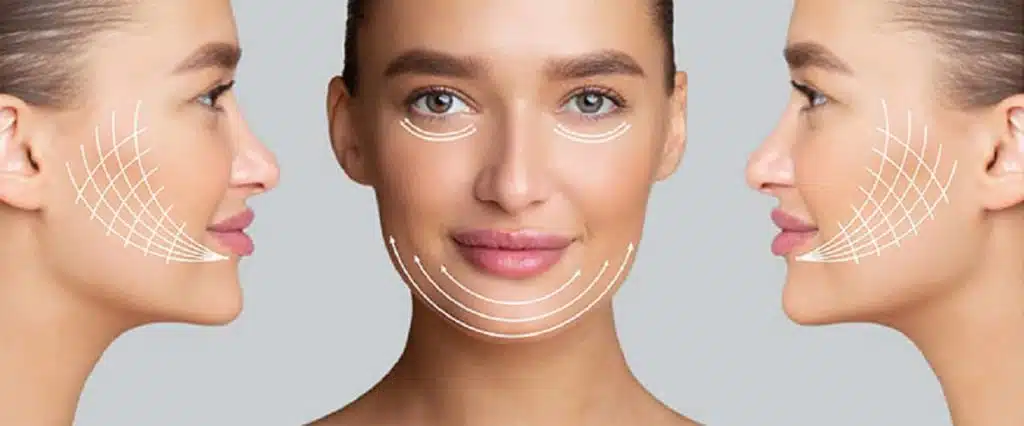
The advantages of this approach include the following:
Surgery Time
The surgery time for a Deep-Plane Facelift is about two to three hours. While this is a longer treatment time than other facelifts, the results last much longer. Many patients only need this type of facelift once in their lifetime!
Shorter Recovery Time

There are no significant changes to the facial muscles, so there is less bruising and swelling. Most people who have a Deep-Plane Facelift report being able to return to their regular activities within two weeks.
More natural-looking results
By working with deeper layers of the face, the best facelift plastic surgeons in Beverly Hills can create results that look more natural. The changes made are less likely to be noticeable, as they will follow the existing contours of your face. Repositioning the SMAS platysma results in a more youthful appearance that can last for over a decade.
Long-lasting results
The Deep-Plane Facelift can provide results that last up to 10 years which makes it a good option for people who want to make a significant change to their appearance that will last for a long time.
Minimally Invasive
The Deep-Plane Facelift is a minimally invasive surgery which means there is less risk of complications and a shorter recovery time. The scars from the surgery are also minimal and will be hidden in the natural contours of your face.
Nasolabial Folds Soften
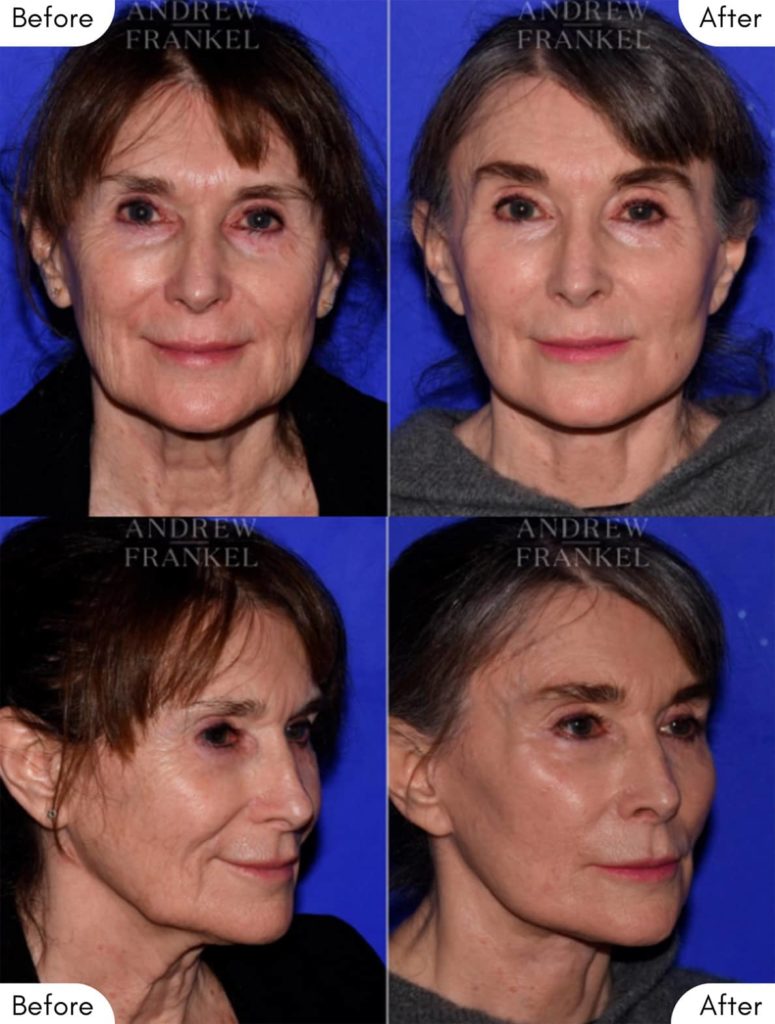
The Deep-Plane Facelift can help to soften the appearance of the nasolabial folds. These lines run from the sides of your nose to the corners of your mouth. Your surgeon can dramatically reduce their appearance by lifting and repositioning the muscles in this area.
Am I a Good Candidate for a Deep-Plane Facelift?
To be considered a good candidate for any facelift surgery, you should be in good overall physical health, not currently smoking, and have realistic expectations for your facelift results. Deep-Plane Facelift patients should understand this procedure well and what makes it a better fit than traditional facelift methods. Your facial plastic surgeon will work with you to determine if you are an optimal candidate for this facelift and help you decide whether a Deep-Plane Facelift or a different method would be most effective in achieving the results you’re looking for.
Many prospective patients are concerned about how their age could affect their results or if they are too young or too old for the procedure. There is no perfect age for a facelift, although your aging signs could affect how successful the surgery will be. However, the best candidates for a Deep-Plane Facelift are men and women over 40 with significant signs of aging in the mid to lower face, including deep nasolabial folds, marionette lines, and jowls.
If you are considering a Deep-Plane Facelift, schedule a consultation with an experienced facial plastic surgeon to learn more about the procedure and what it can do for you.
When Should I Go for Deep-Plane Facelift Procedure?
As the years go by, it’s not uncommon for patients to start noticing changes in their appearance. The skin on our faces loses elasticity, which can cause drooping and sagging. Fine lines and wrinkles become more pronounced. With time, we may even see some saggy jowls start to form.
Here are the conditions that would make you a candidate for a Deep-Plane Facelift:
- You have significant skin laxity.
- The deeper layers of your facial tissue have started to descend.
- You have lost the definition in your jawline.
- You are starting to see marionette lines form around your mouth.
- Your nasolabial folds are getting deeper.
- Malar fat pads have started to descend, causing puffy cheeks.
- The jowls have started to sag, which may be visible when making certain facial expressions.
- Festoons (malar mounds), facial dimples, and other signs of aging.
If you are experiencing any of these changes, it may be time to consider a Deep-Plane Facelift. This procedure can help to restore a more youthful appearance by tightening the deeper layers of facial tissue and reestablishing the definition of your jawline.
Risks Associated With The Deep-Plane Facelift
The Deep-Plane Facelift has many benefits over the traditional facelift. The flap created by the deep-plane dissection is well-vascularized and provides increased protection against potential problems. However, there are some risks associated with the procedure, including:
Infections and First-Bite Syndrome
Infections are rare, occurring in less than 1% of cases.
First-bite syndrome is a condition characterized by pain in the jaw when chewing. It is relatively rare, occurring in less than 1% of cases. However, it can be severe and should be monitored closely.
Skin Slough
Skin sloughing is a rare complication that can occur after a Deep-Plane Facelift. This condition occurs when the skin peels away from the underlying tissue. The most common symptom is a reddish-brown discoloration of the skin. This condition usually resolves on its own within a few days. Most commonly, it appears in the post-auricular location (behind the ear).
Facial Nerve Injury
This is the most common complication associated with the Deep-Plane Facelift. The rate of injury ranges from 1-5%. In this condition, the patient’s facial nerve is damaged, which can cause paralysis of the face. The most common symptom is loss of movement on one side of the face. This condition is usually temporary and resolves on its own within a few weeks. In extremely rare cases, the injury can be permanent.
Great Auricular Nerve Injury
The great auricular nerve is the most commonly injured. It innervates the earlobe. Injury to this nerve can occur in up to 7% of cases. Symptoms include lobule numbness.
Pixie Ear Deformity and Alopecia
A pixie ear deformity is a deformity of the earlobe caused by excessive tension on the lobule during skin inset. It can be avoided using beveled hairline incisions and avoiding cautery near the hairline.
Alopecia is the loss of hair. It can occur in the incision line and is more common with longer incisions. It can be avoided with beveled incisions and the avoidance of cautery near the hairline.
Book a Deep-Plane Facelift Consultation Today
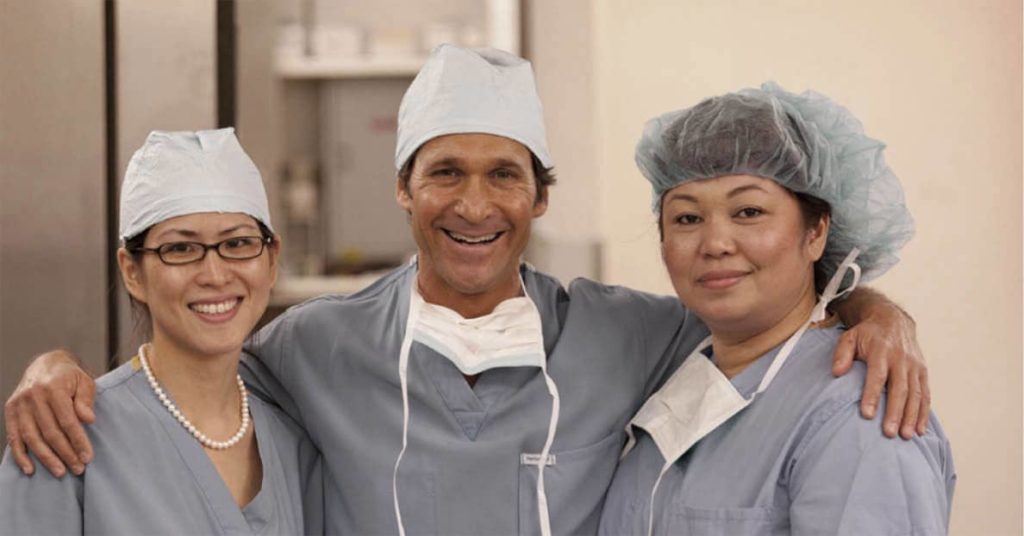
Consult with a facelift-certified facial plastic surgeon who will guide you through the process of a Deep-Plane Facelift from beginning to end. Dr. Andrew Frankel is board certified in Facial Plastic and Reconstructive Surgery and Otolaryngology-Head and Neck Surgery (ENT). His focus is on facial rejuvenation, primarily through facelifts, brow lifts, eyelid surgery, cheek lift, neck lift, and rhinoplasty. Since 1994, Dr. Frankel has been practicing at the Lasky Clinic and has earned recognition as an expert in his field. He has many publications in peer-reviewed conferences on various topics, including midface lifts, Botox, rhinoplasty, and more.
Contact the Lasky Clinic at 201 South Lasky Drive in Beverly Hills, California, to consult with Dr. Frankel. Call 310.552.2173 or visit this link to schedule your appointment today.
Frequently Asked Questions – Plastic Surgery
There is minimal pain associated with the Deep-Plane Facelift procedure. Most patients report only mild discomfort that can be controlled with medication.
The incisions for a Deep-Plane Facelift are placed in front of and behind the ear. The incisions extend into the hairline and are kept hidden within the natural contours of the ear.
A Deep-Plane Facelift can take years off of your appearance. Some patients have reported looking decades younger. The results are long-lasting and natural looking.
A Deep-Plane Facelift can improve the appearance of the cheeks by lifting them and restoring volume.
Deep-Plane Facelifts are more expensive than traditional facelifts because they require more time and skill to perform. The average cost of a Deep-Plane Facelift is between $20,000 and $30,000.
Final Thoughts
Plastic surgeons do not recommend facelifts for people who have just begun to notice wrinkles or drooping skin. Deep-Plane Facelifts are some of the best treatments for people with significant facial aging. Make sure you’re aware of the risks and recovery period. If you are considering a cosmetic procedure, consult a board-certified plastic surgeon to discuss your goals and expectations. The plastic surgeon will evaluate your facial structure, skin tone, and the condition of your skin. The surgeon will then develop a surgical plan that is tailored to your individual needs.
Dr. Andrew Frankel is a board-certified plastic surgeon specializing in facelifts and other facial rejuvenation procedures. Schedule a consultation with Dr. Frankel to get sincere, professional advice about whether a Deep-Plane Facelift is the best option for you.

